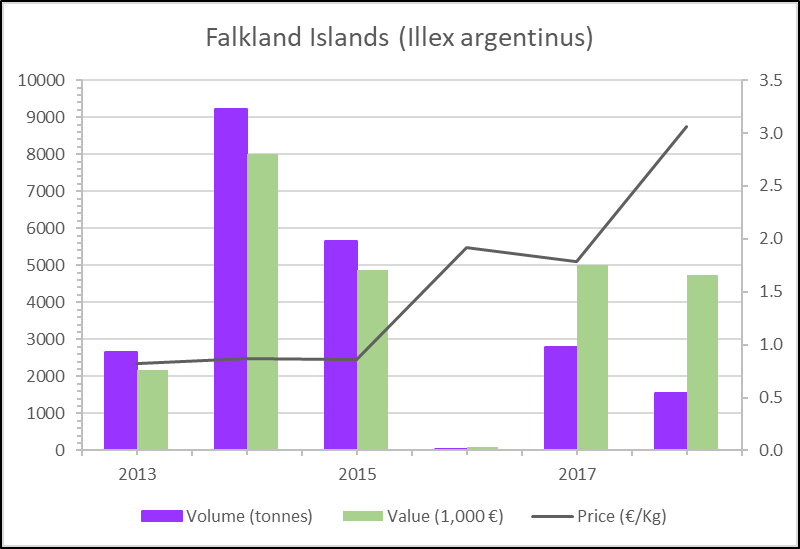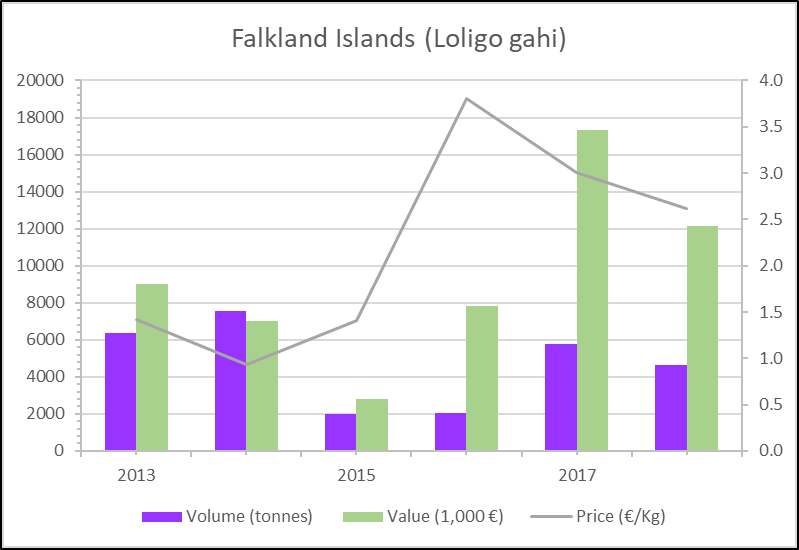CASE STUDIES
Galicia (Bueu and Ribeira)
The main octopus’ fishery in Spain is the small-scale Octopus vulgaris trap fishery in Galicia; with around 670 active boats, more than 1,100 fishers (2016) and accounting for yearly average landings over 2,400 t and almost €15 million (2010-20), this is one of the most important small-scale fisheries in Spain. Despite of this, the fishery is experiencing a steady social decline, in line with the small-scale sector in Spain, with almost 4 boats less every year. Nevertheless, catches are more linked to the environmental conditions and the ecology of the species, varying from 1,000 to 4,000 t depending on the year (2010-20). The two main Galician ports are Ribeira (109 boats, 180 fishers, 360 t and €2.4 million per year) and Bueu (83 boats, 137 fishers, 215 t and €1.4 million per year), although O. vulgaris is sold in more than 35 auction markets along Galicia, showing this way its immense socioeconomic relevance in the region.
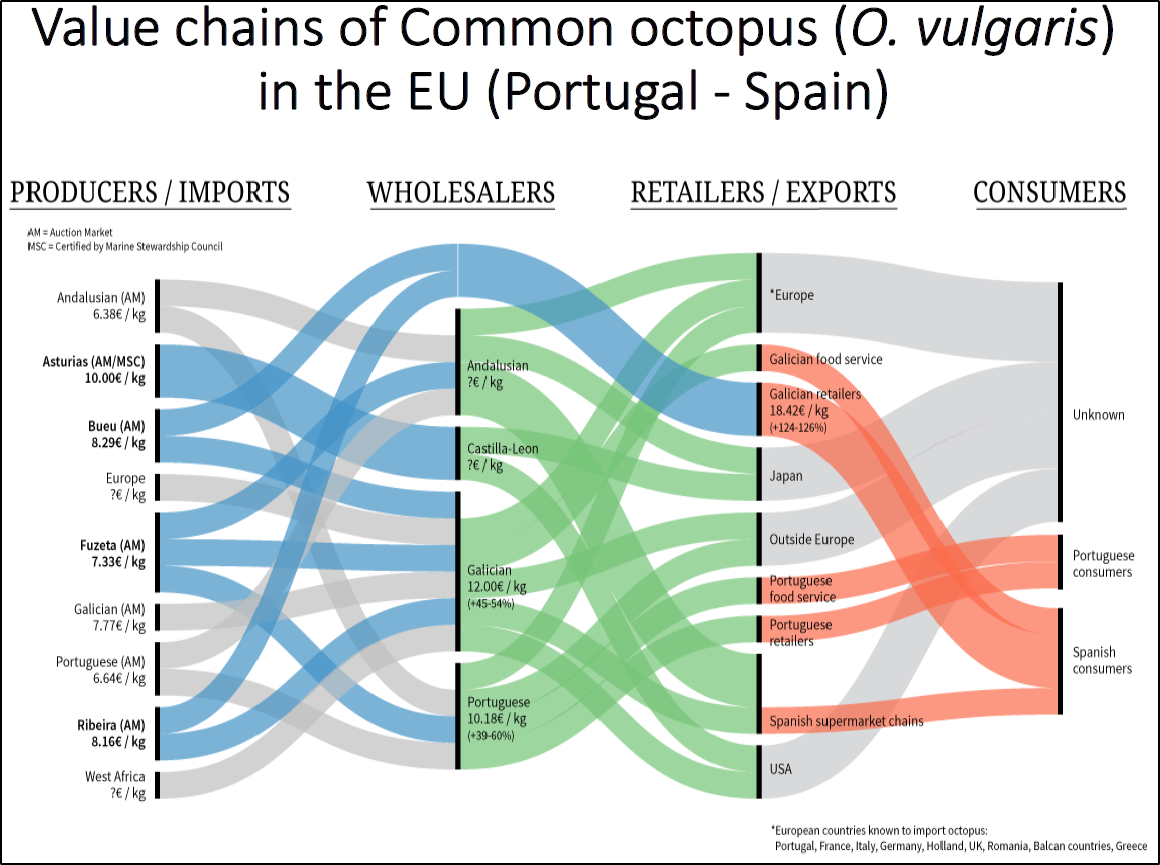
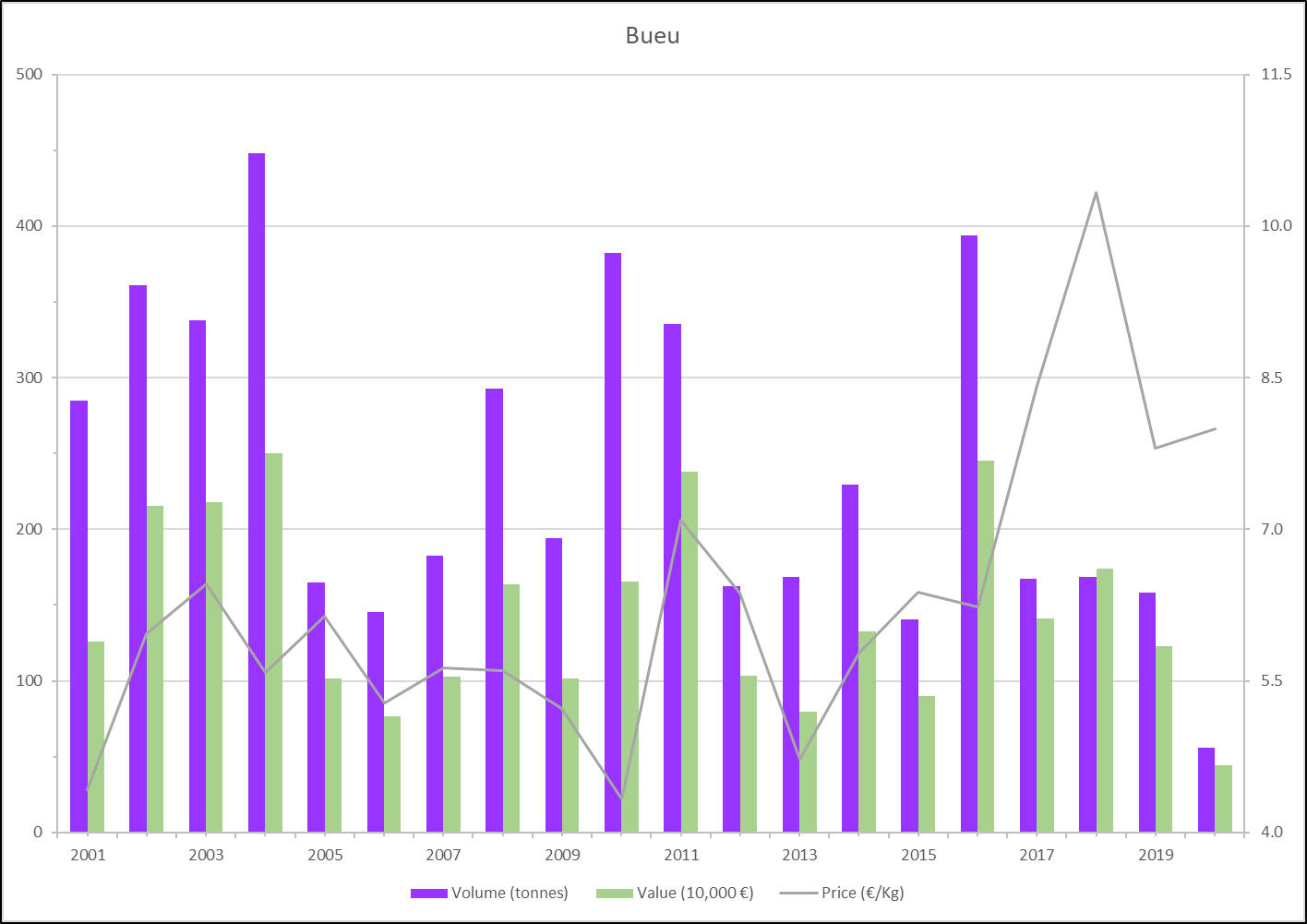
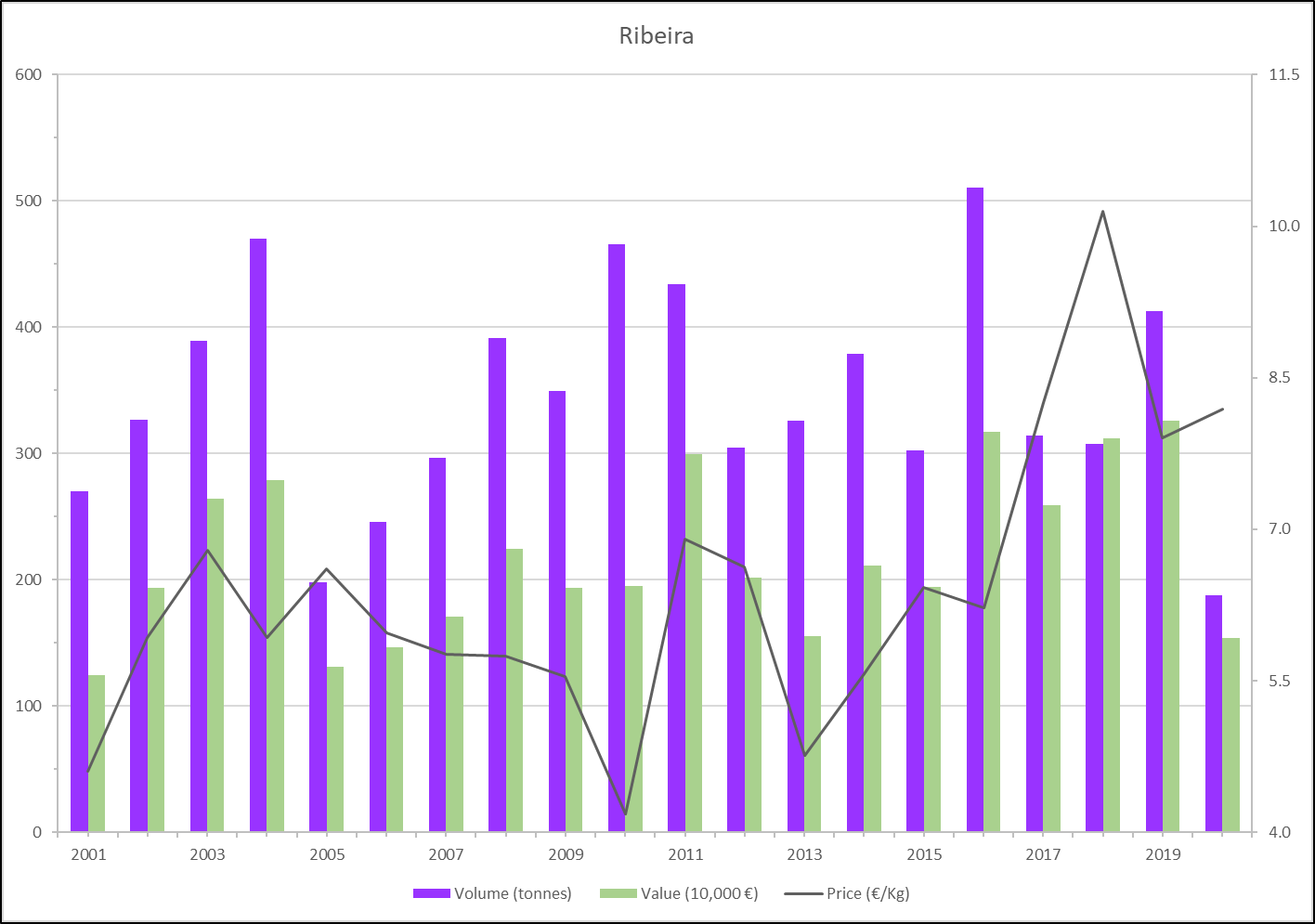
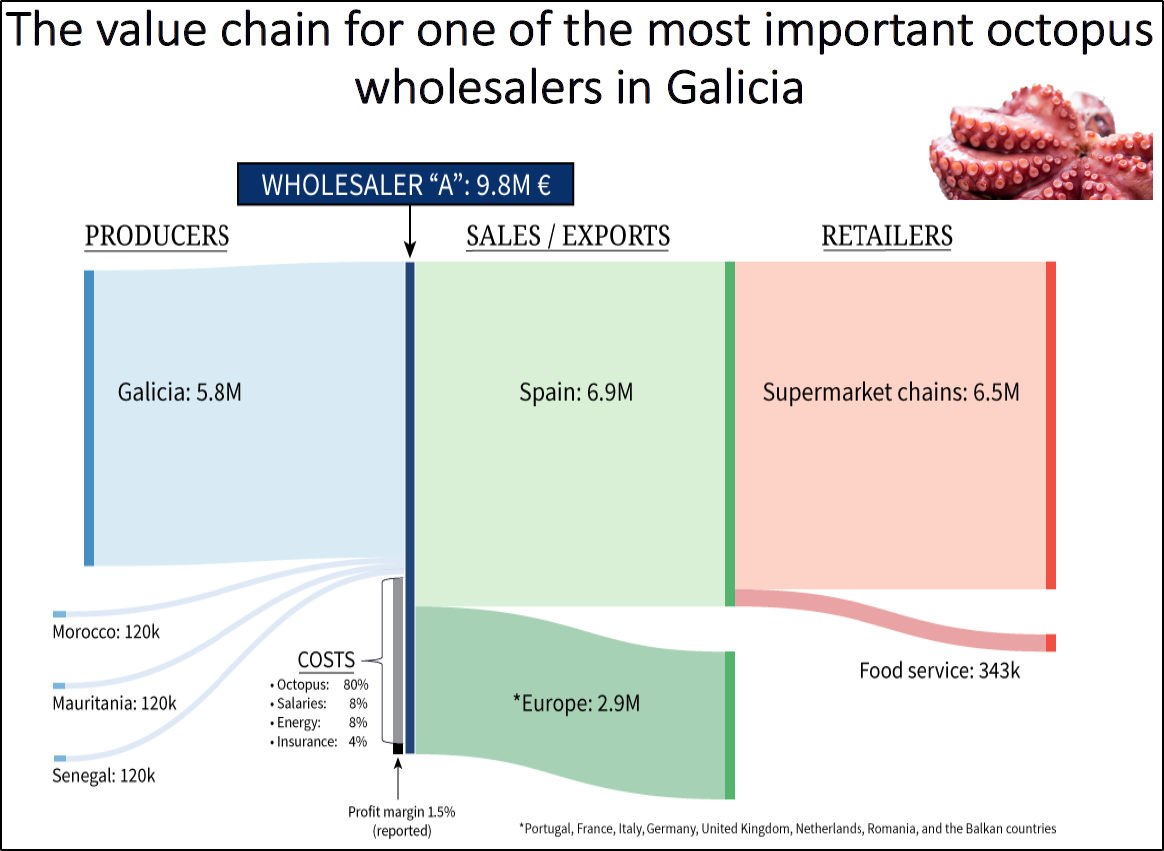
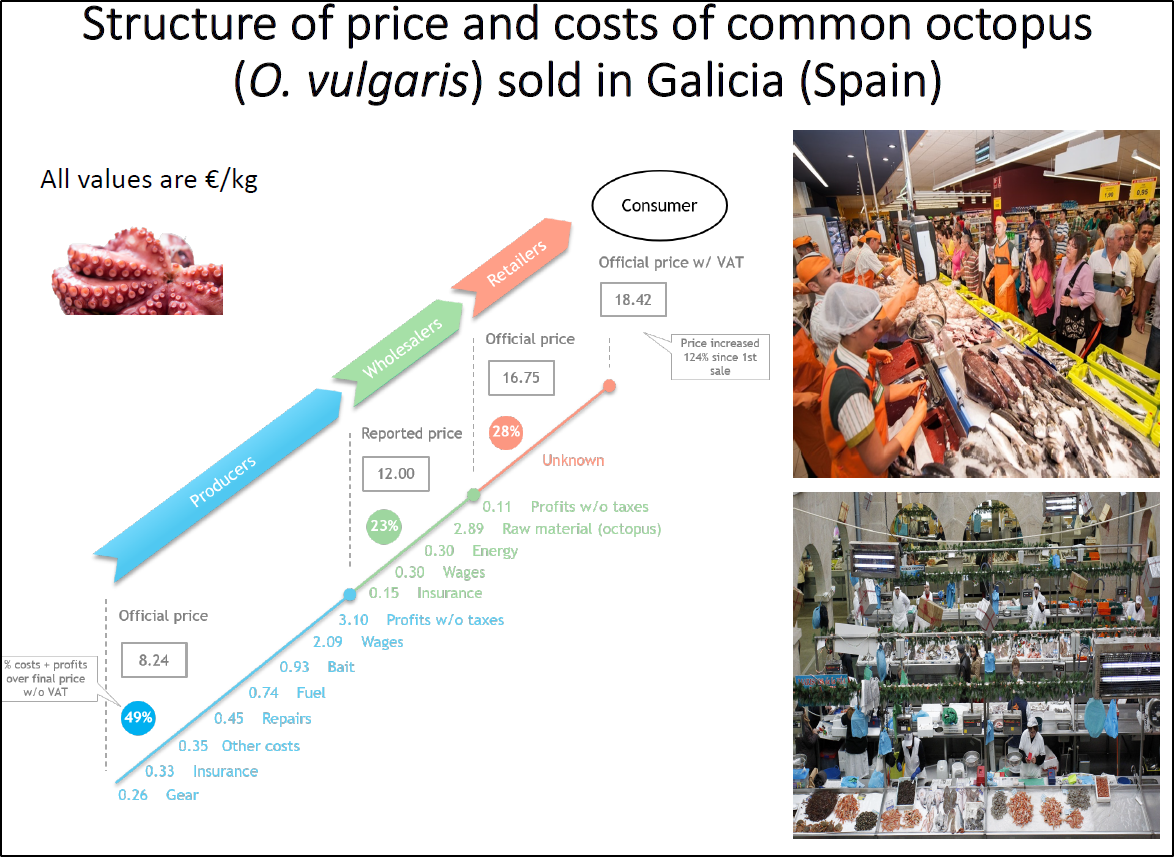
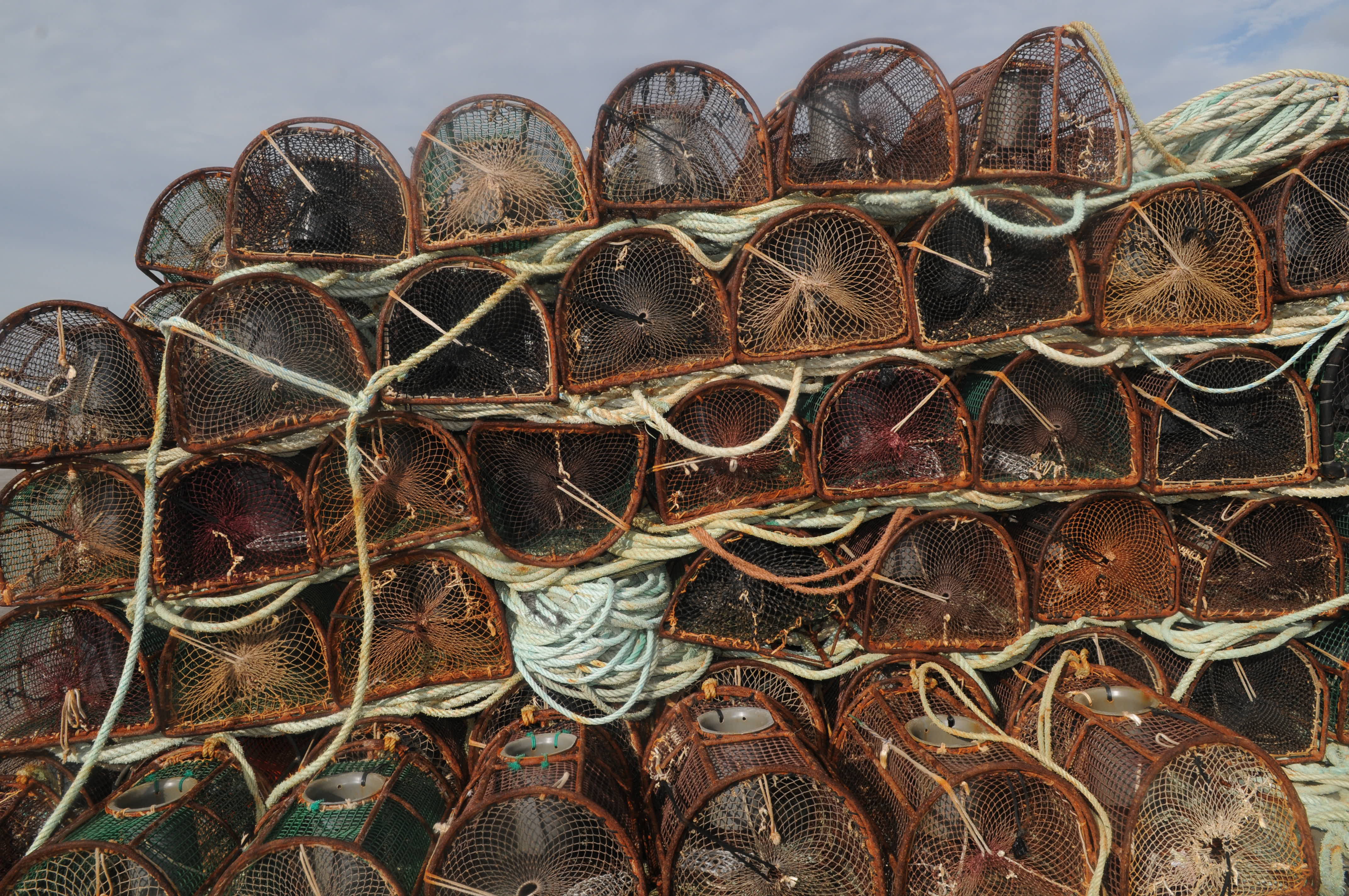
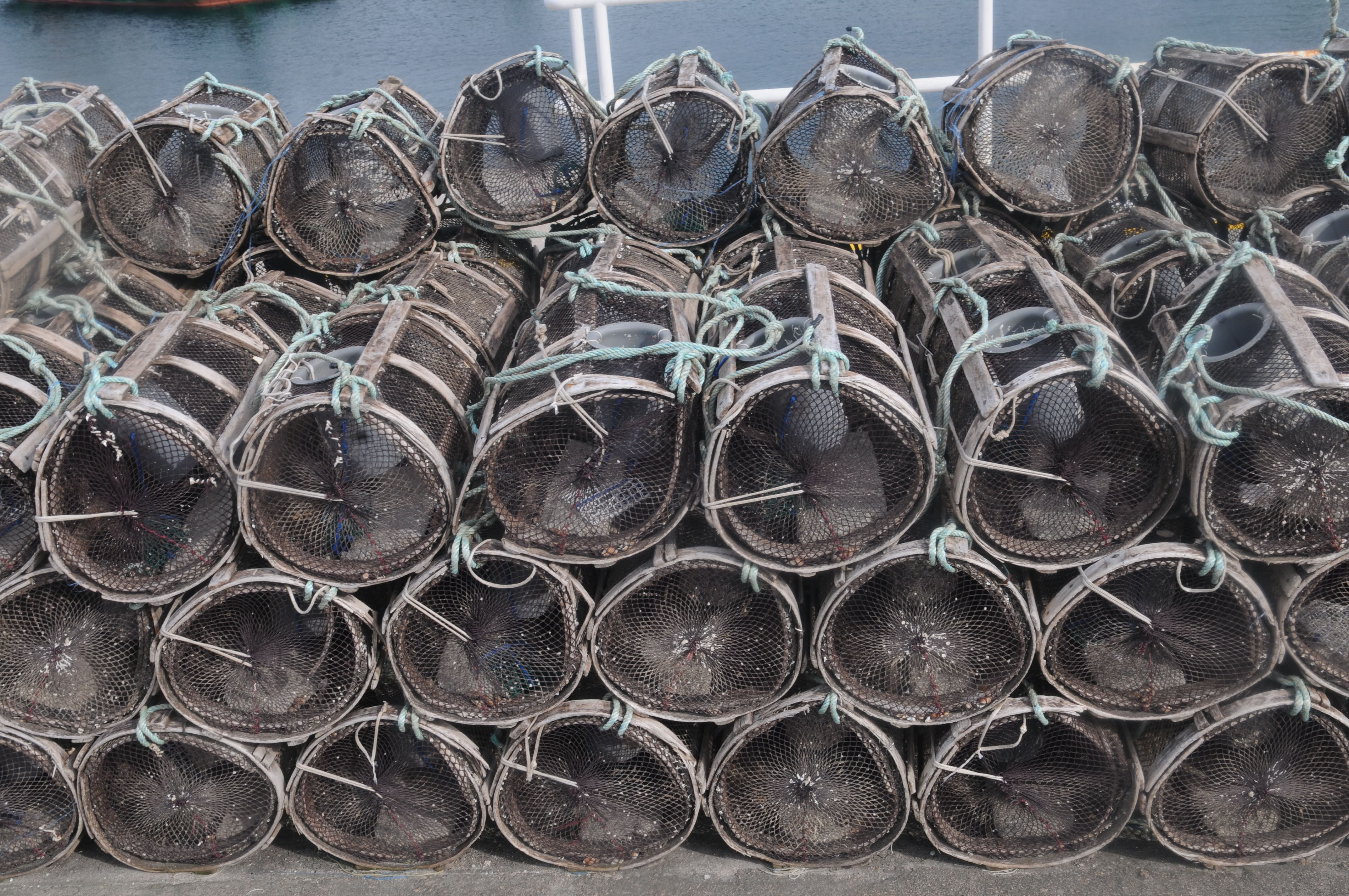
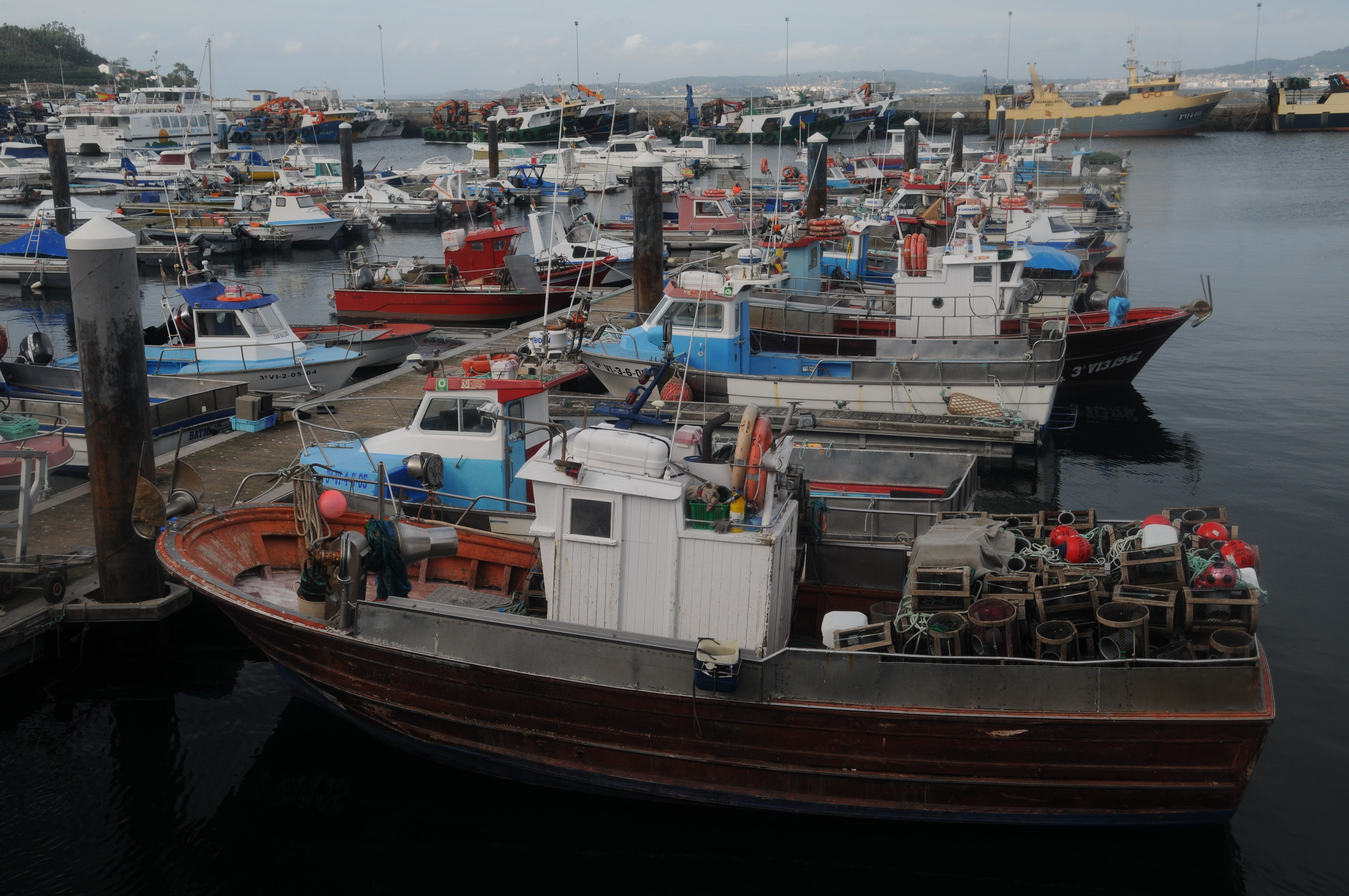
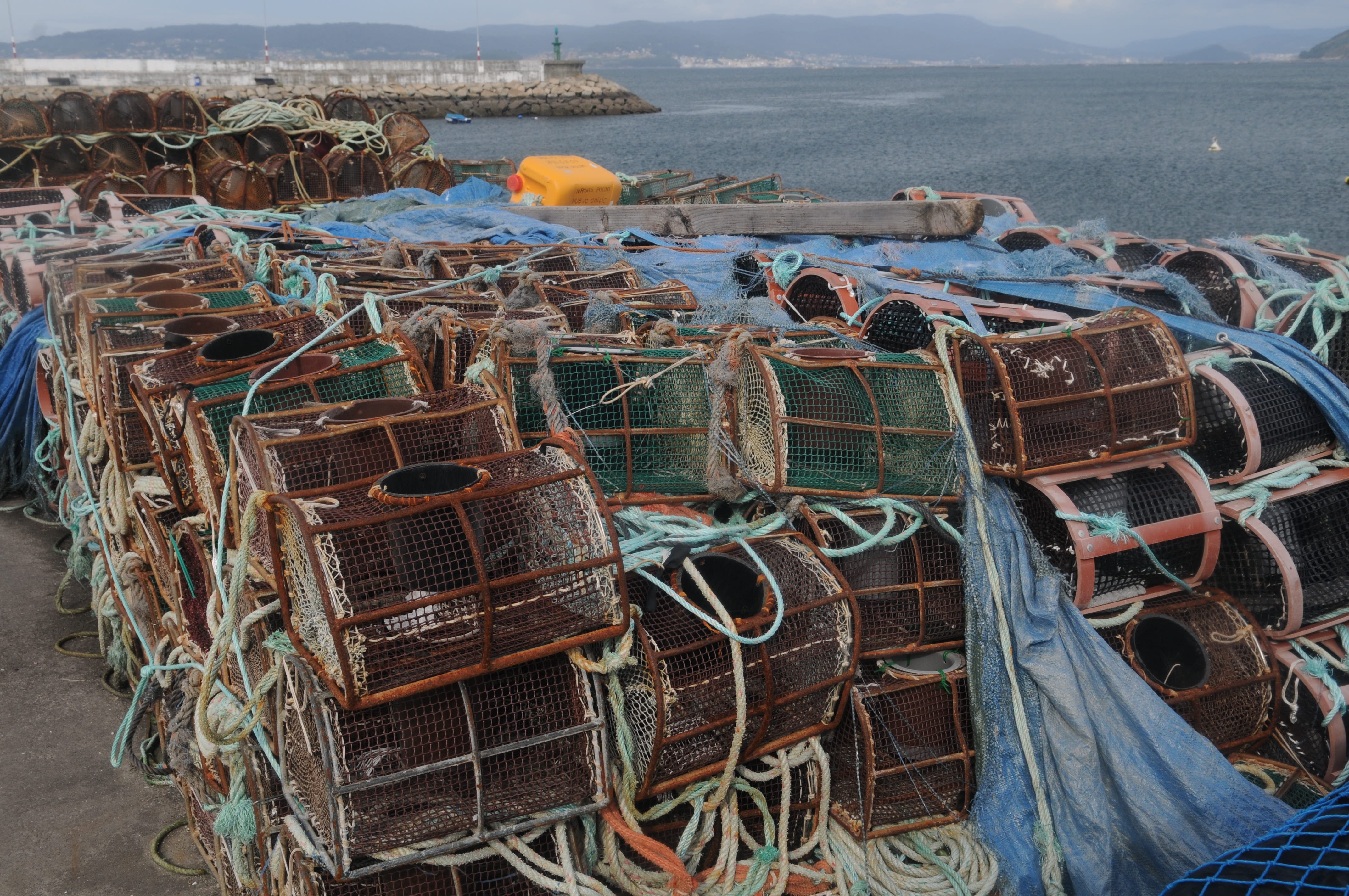
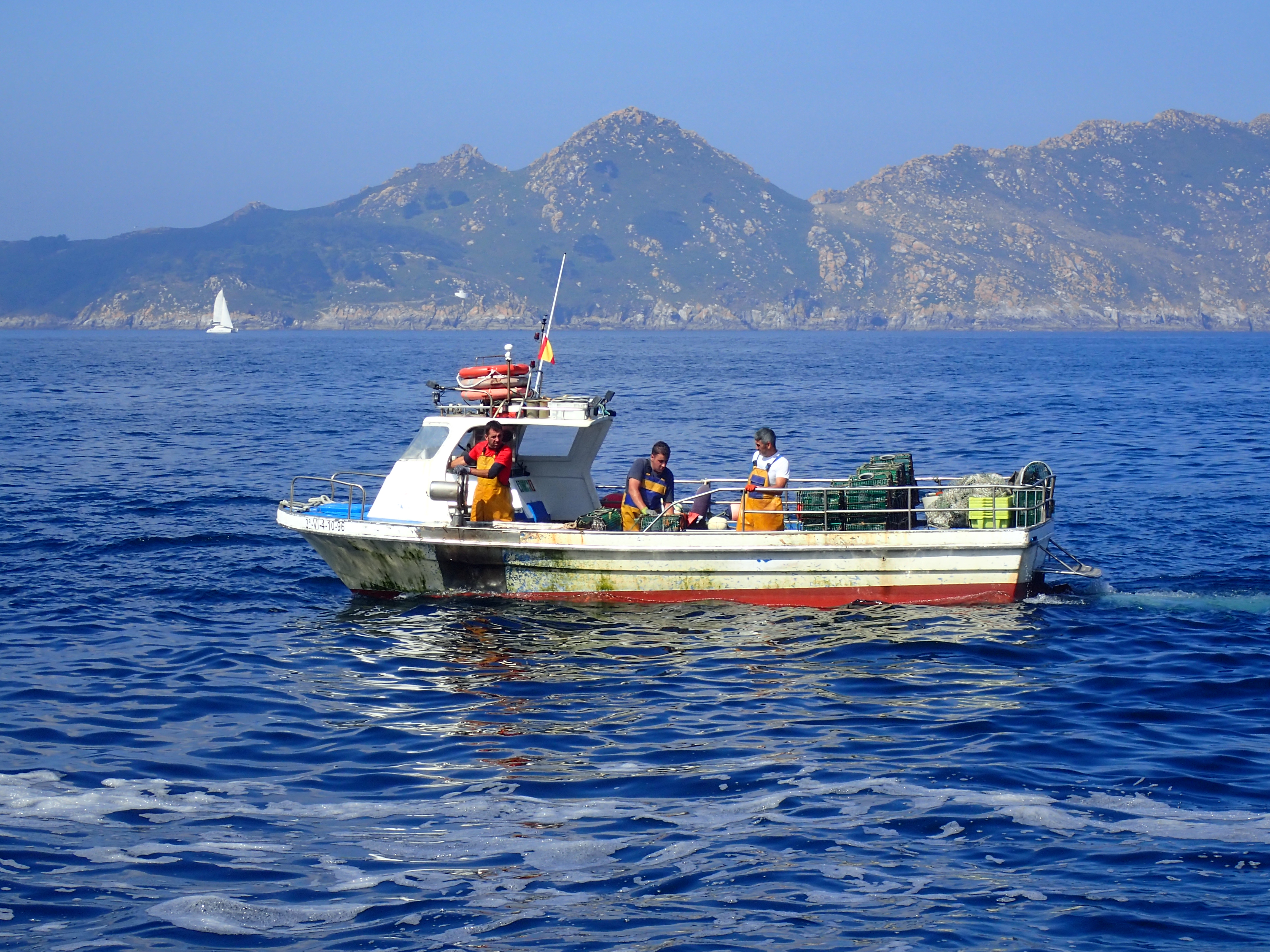
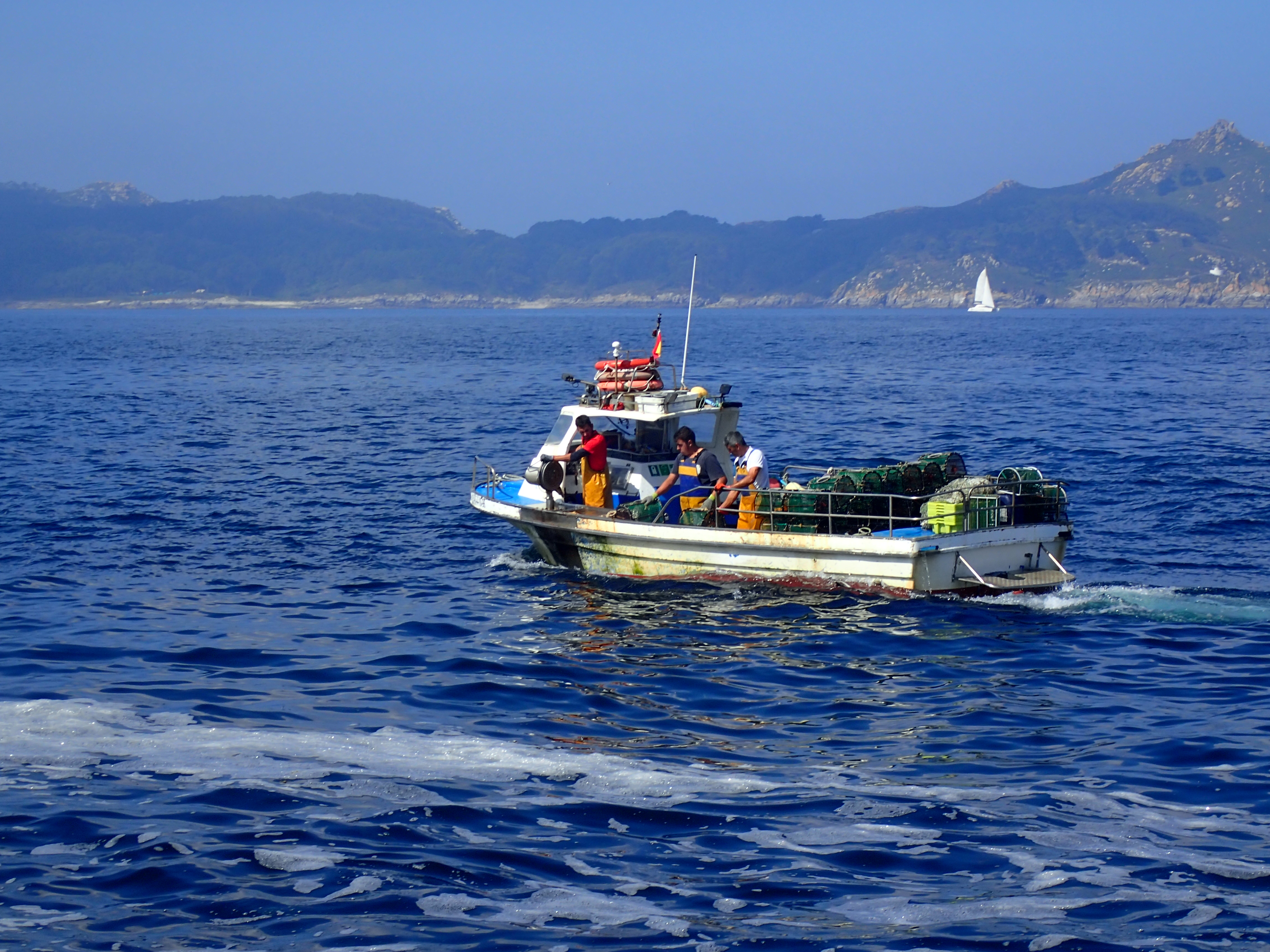
Fuzeta
The traps/pots Octopus vulgaris fishery is the main small-scale fishery in Portugal and its relevance in the Algarve (358 active boats, 1,500 fishers, and €17.2 million) is even higher, representing 28% of the total regional fishery landings. Fuzeta, a small fishing community in the Algarve (S Portugal), depends almost completely on the octopus´ fishery and its derivatives. With 86 boats and 173 fishers the fishery lands every year almost 100 t valued €0.6 million on average (2010-17). It is a directed fishery with 95% of its catches being O. vulgaris which are sold by the Associação de Armadores de Pesca da Fuzeta (AAPF) in the fish market of Fuzeta port to more than 15 different buyers from Portugal and Spain and then exported to Europe, Asia and North America. The economic dependence of Fuzeta on octopus for their livelihood has been increasing over the last few decades, representing 80 % and 92 %, in weight and value, of the total landings in 2017.

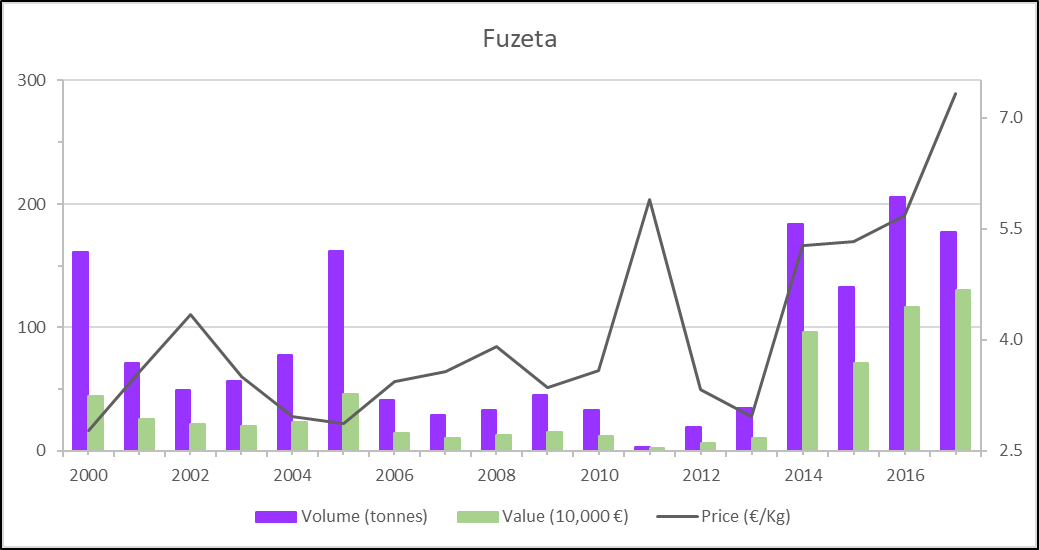
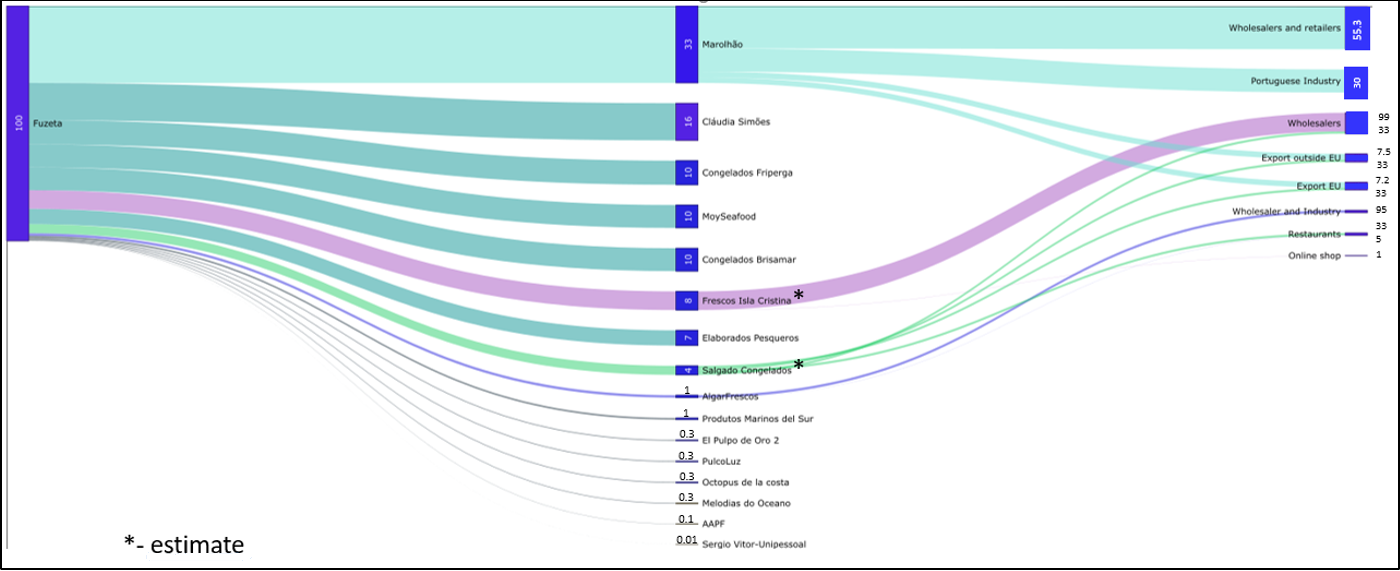
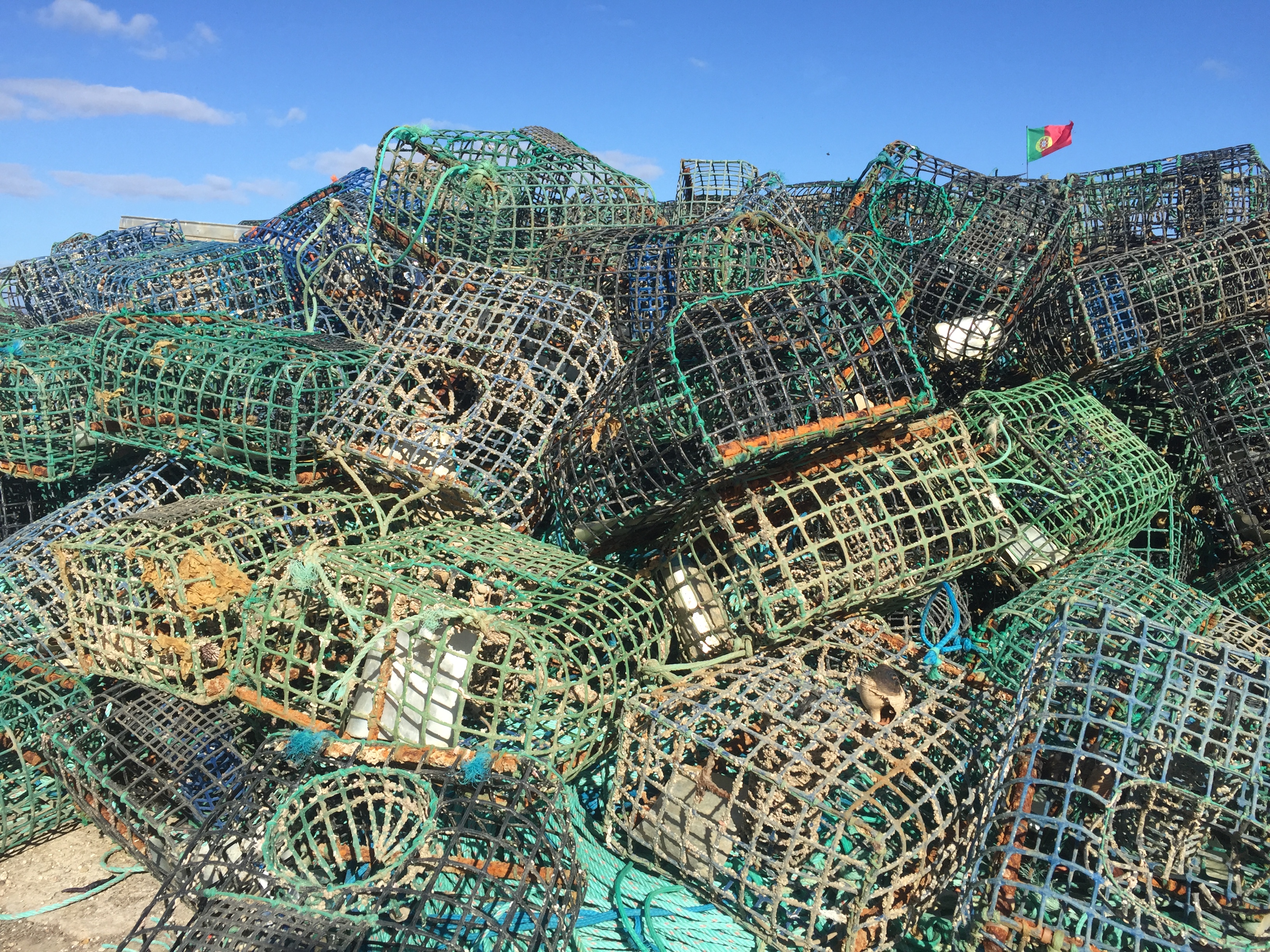
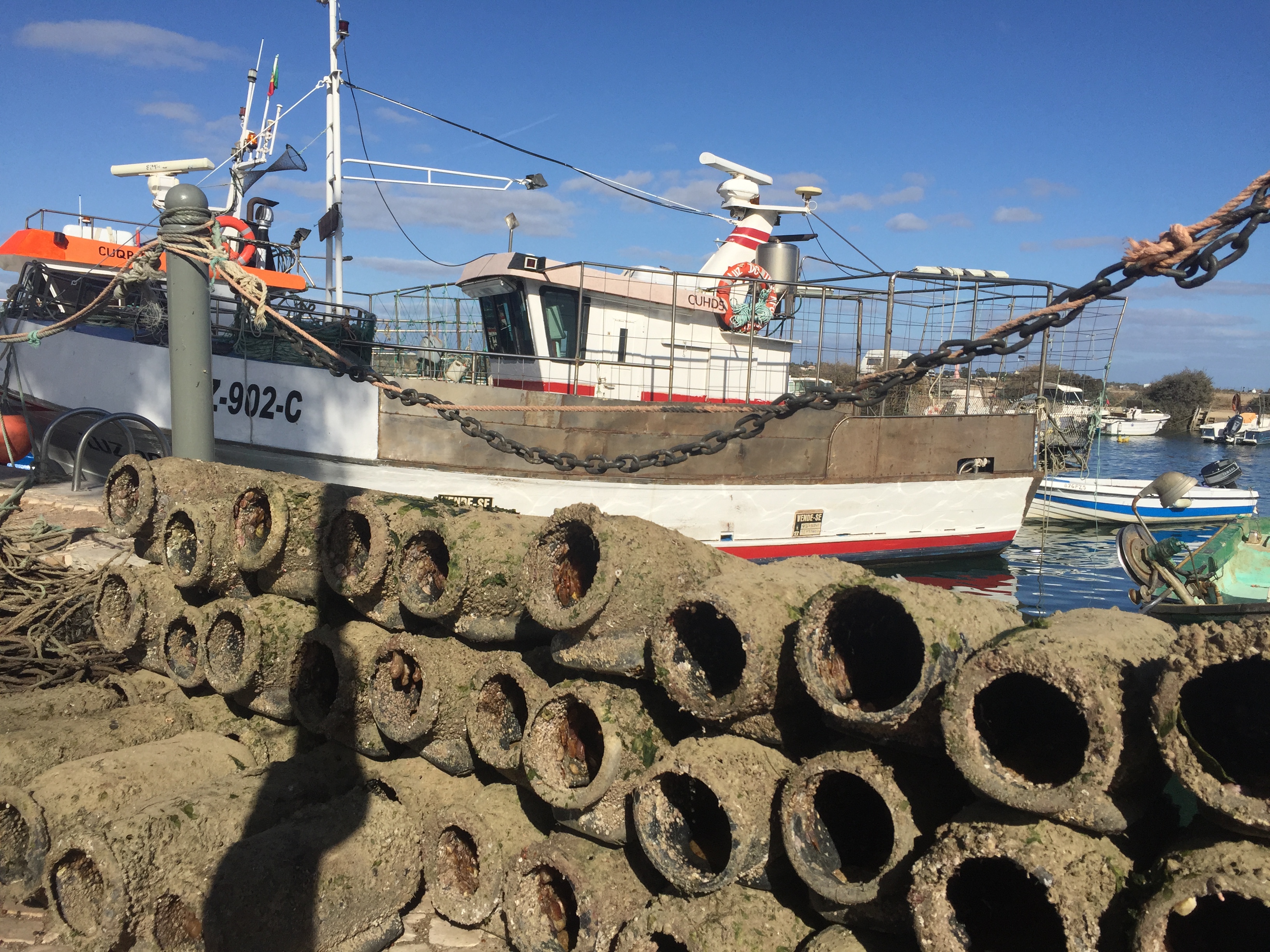
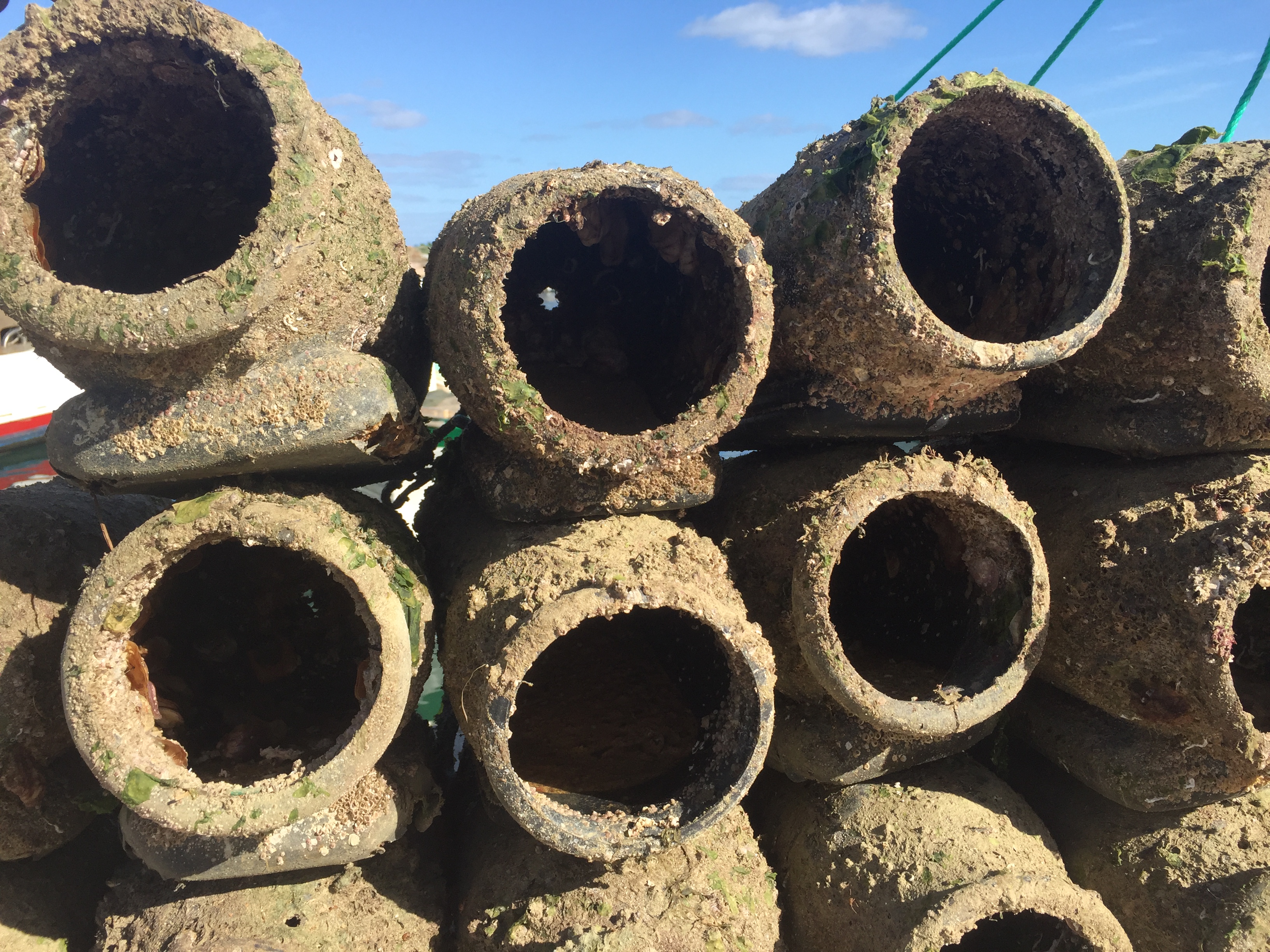
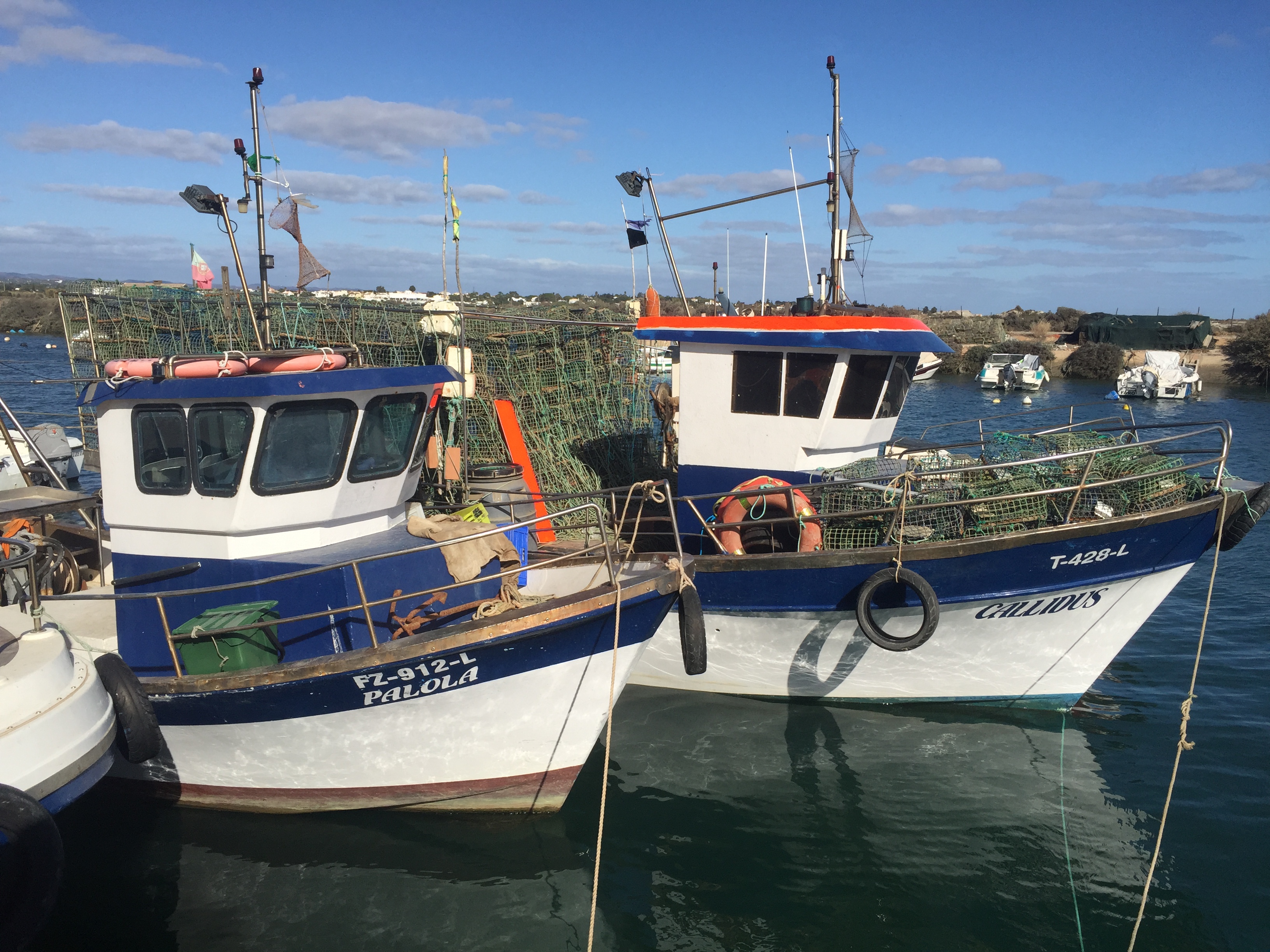
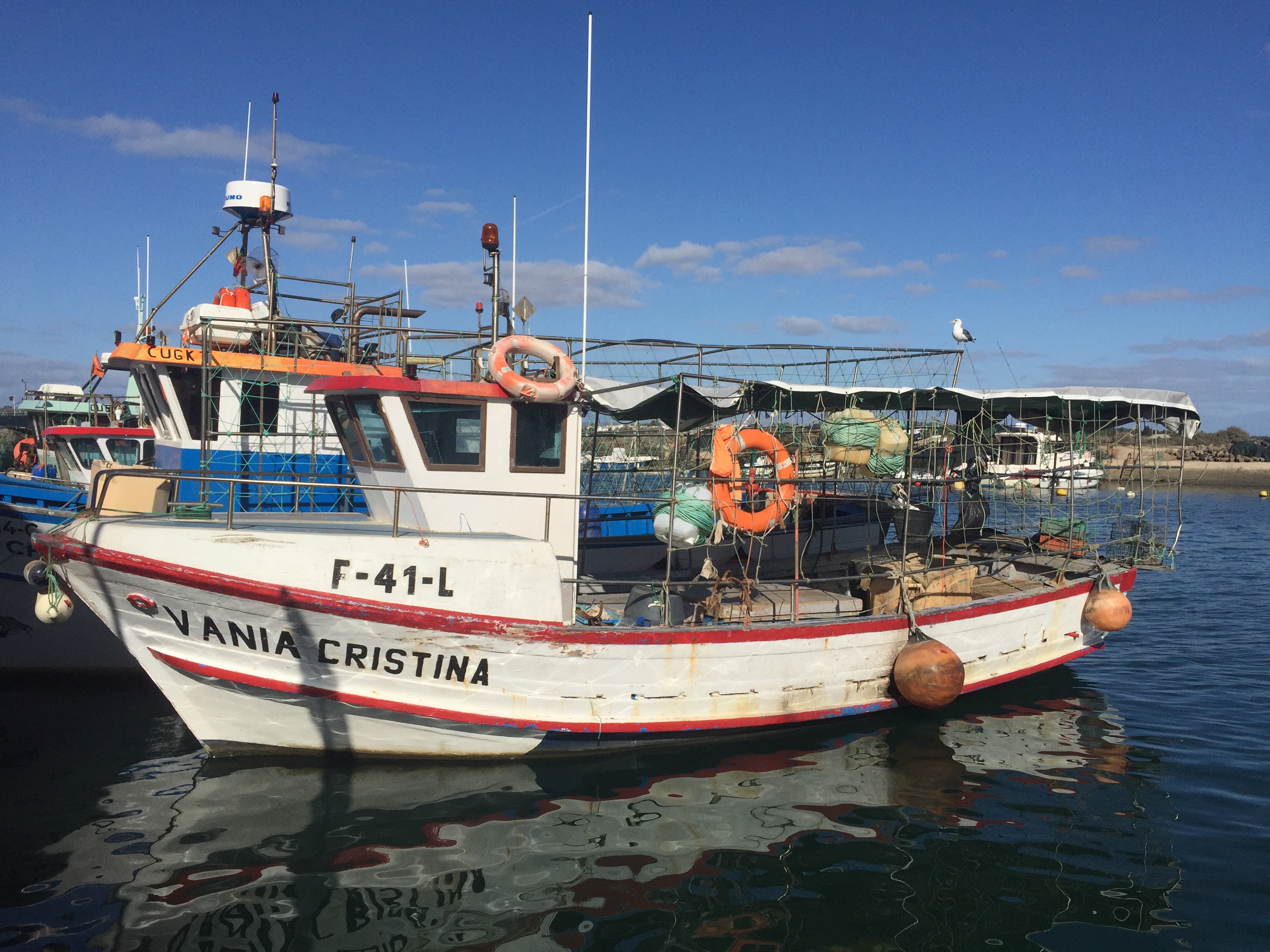
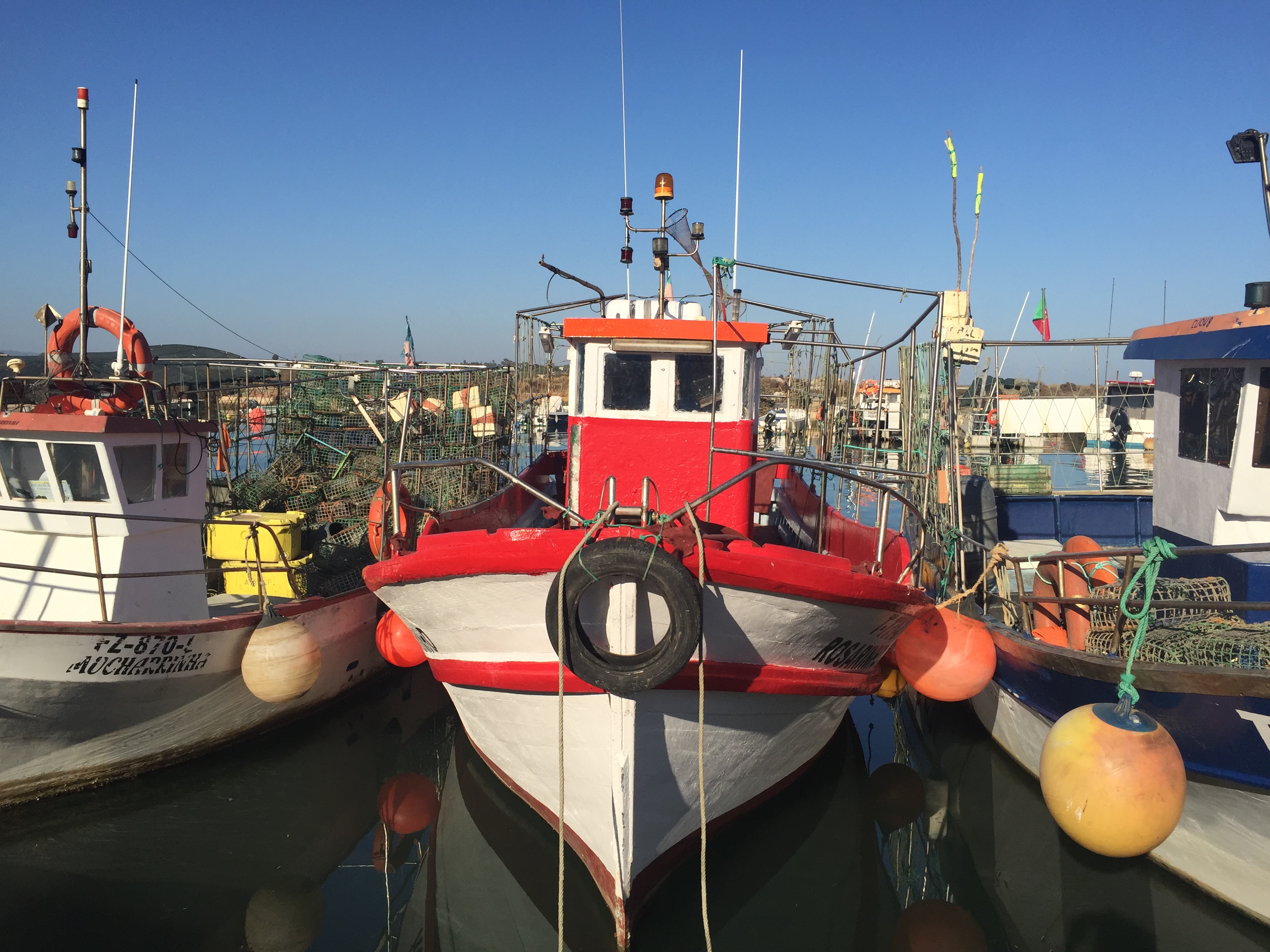
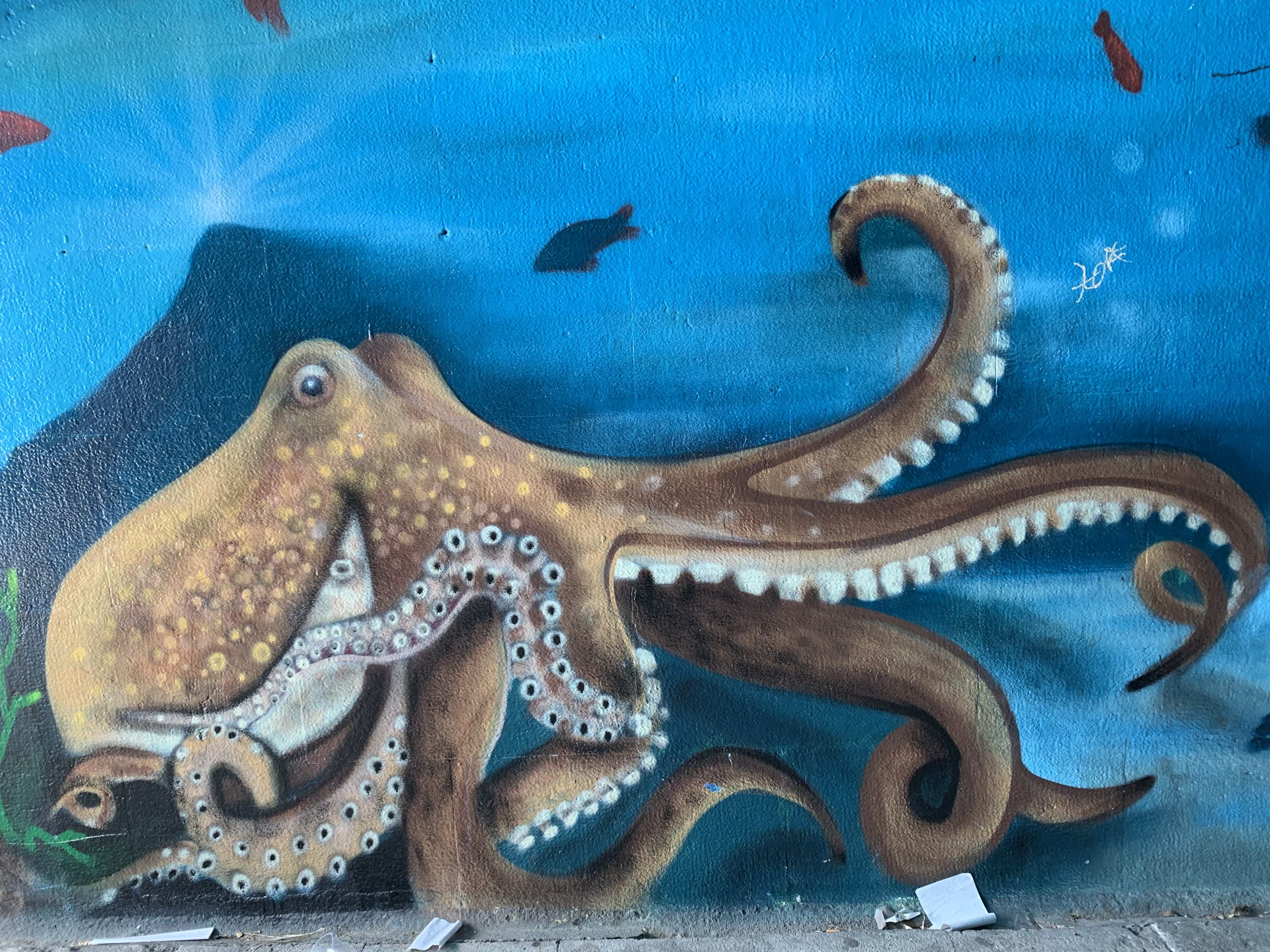

Asturias
In Asturias (N Spain), there is a small and artisanal Octopus vulgaris trap fishery, with around 45 active boats and 90 fishers (2018) it accounts for yearly average landings of almost 100 t (47-164 t) and over €0.6 million (€0.2-1.1 million) in the last 10 years. Despite its small size, the good environment between the fishers and the fisheries administration of Asturias has translated in a strong commitment with sustainability which allowed them to became the first cephalopods´ fishery certified (2016) by the Marine Stewardship Council (MSC) in the world. This recognition gave the fishery the chance to export their catches to the best markets and introduce new and constants improvements (e.g. stock assessment, on-board observers program, boats tracking system, marking system for the line of traps,…) for assuring its sustainability. The fishery is an example in Spain and Asturias where it has a strong socioeconomic relevance.

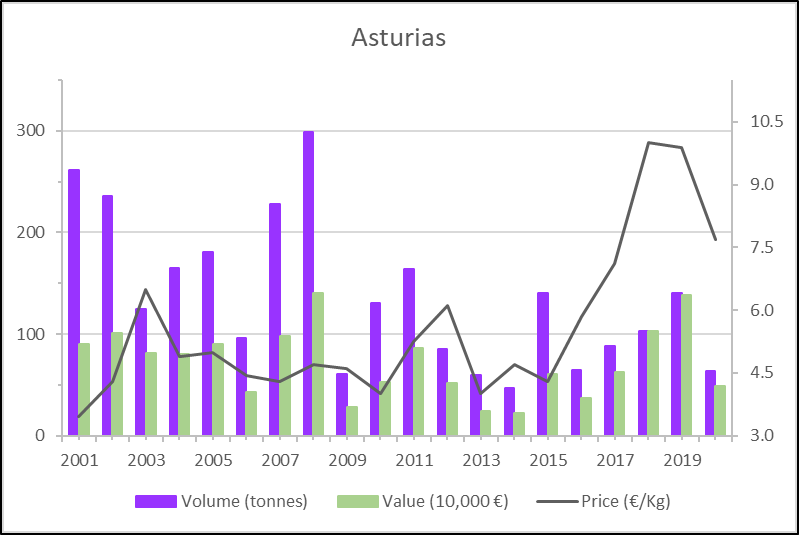
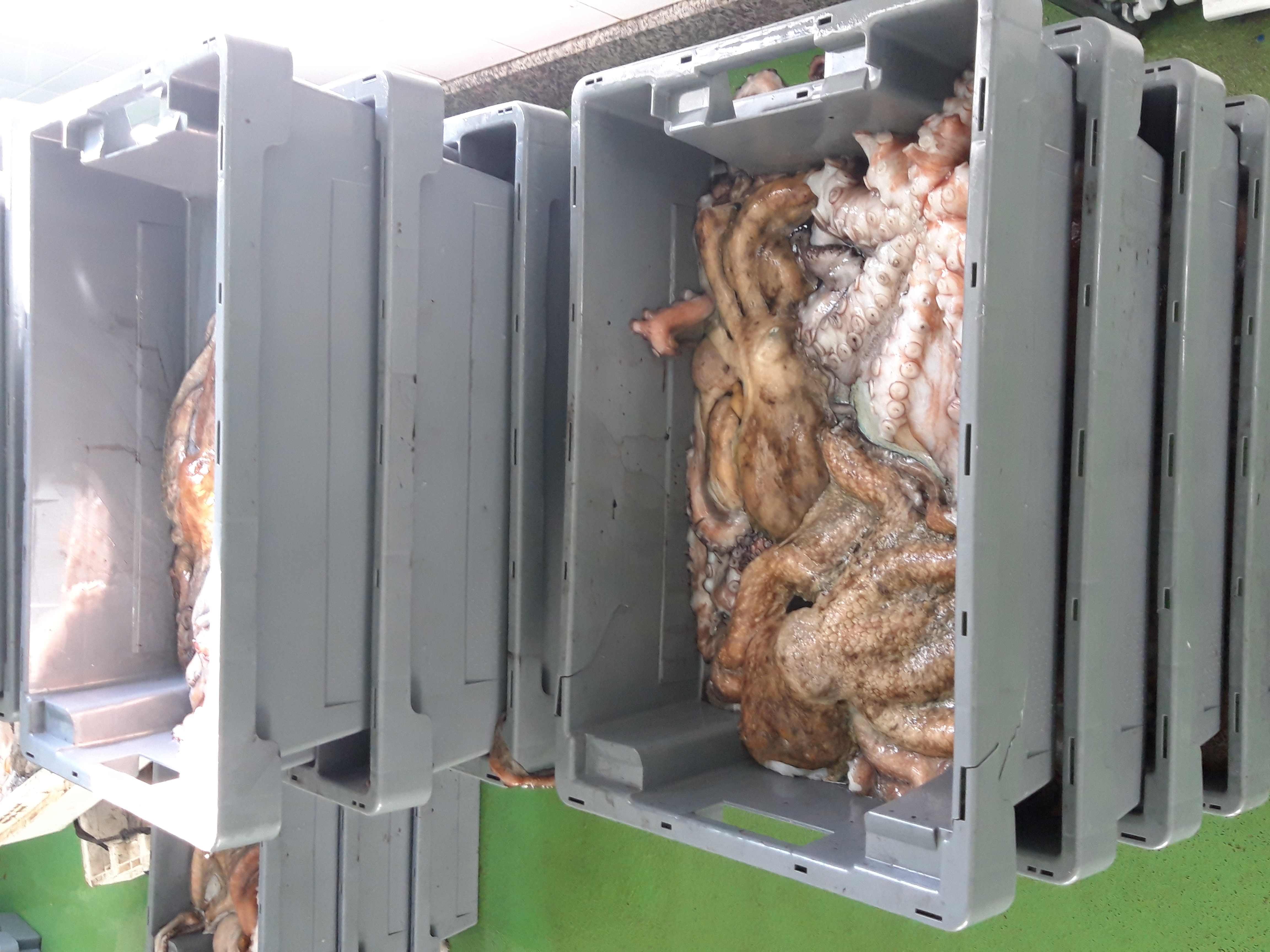
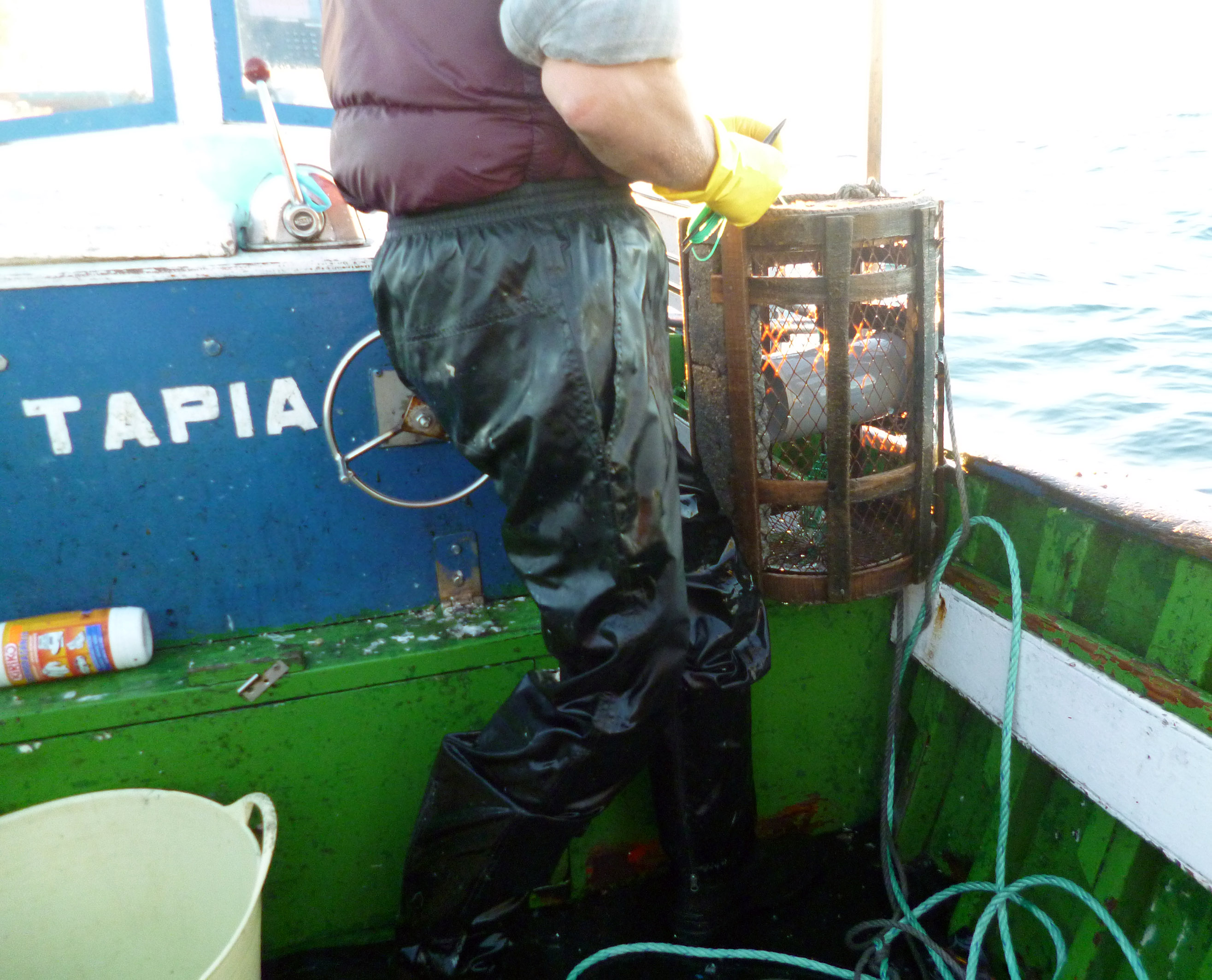
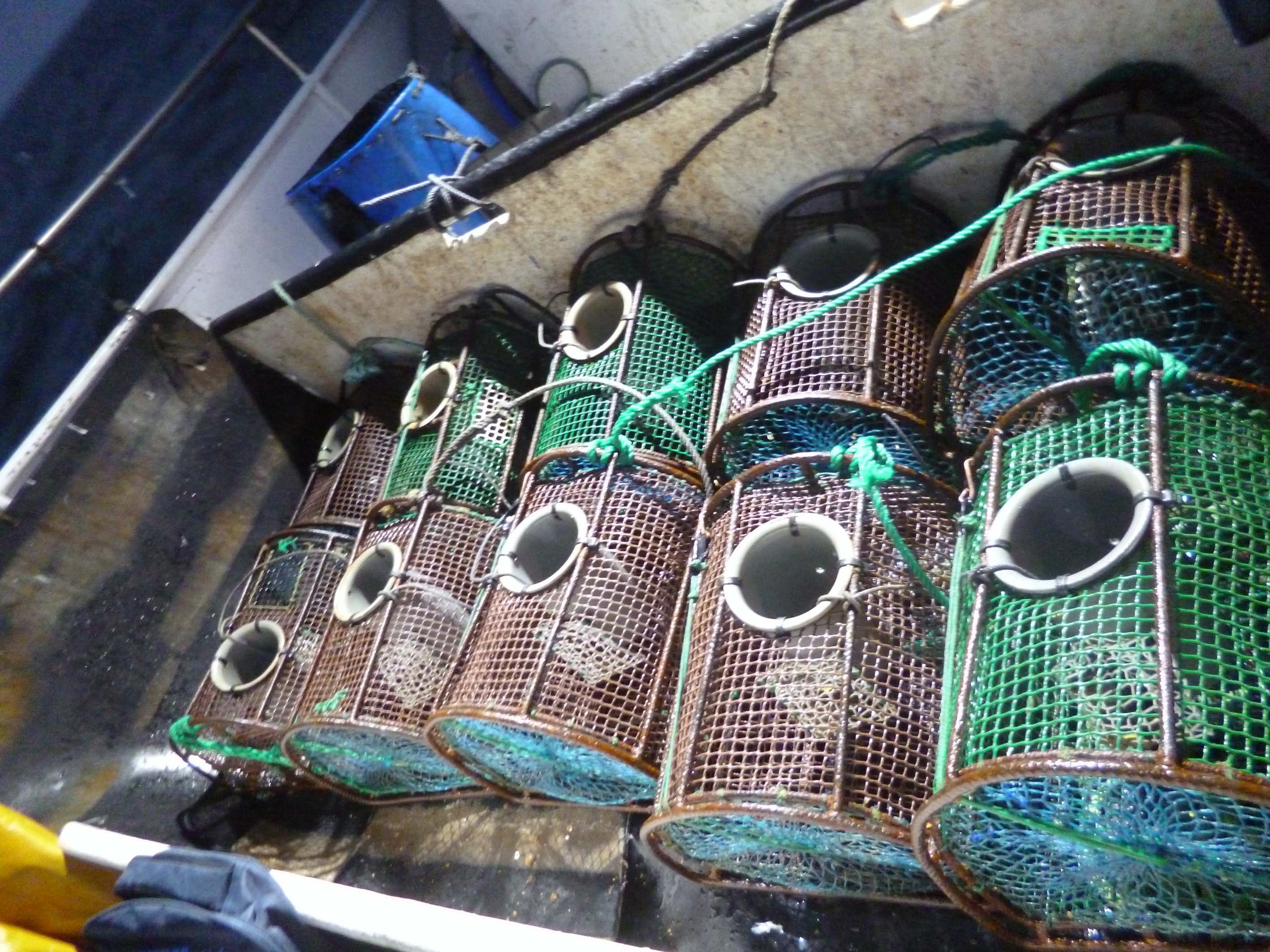
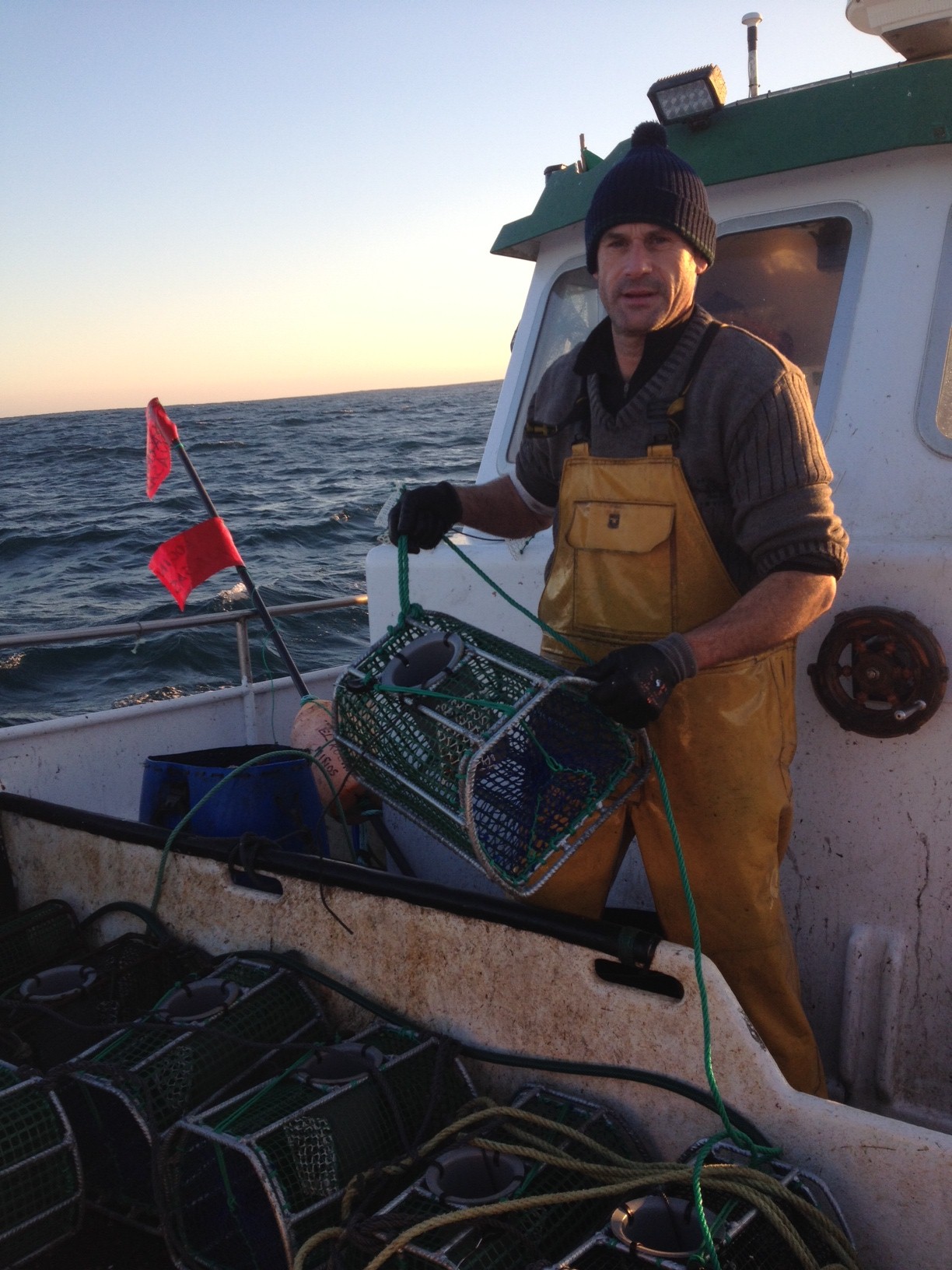


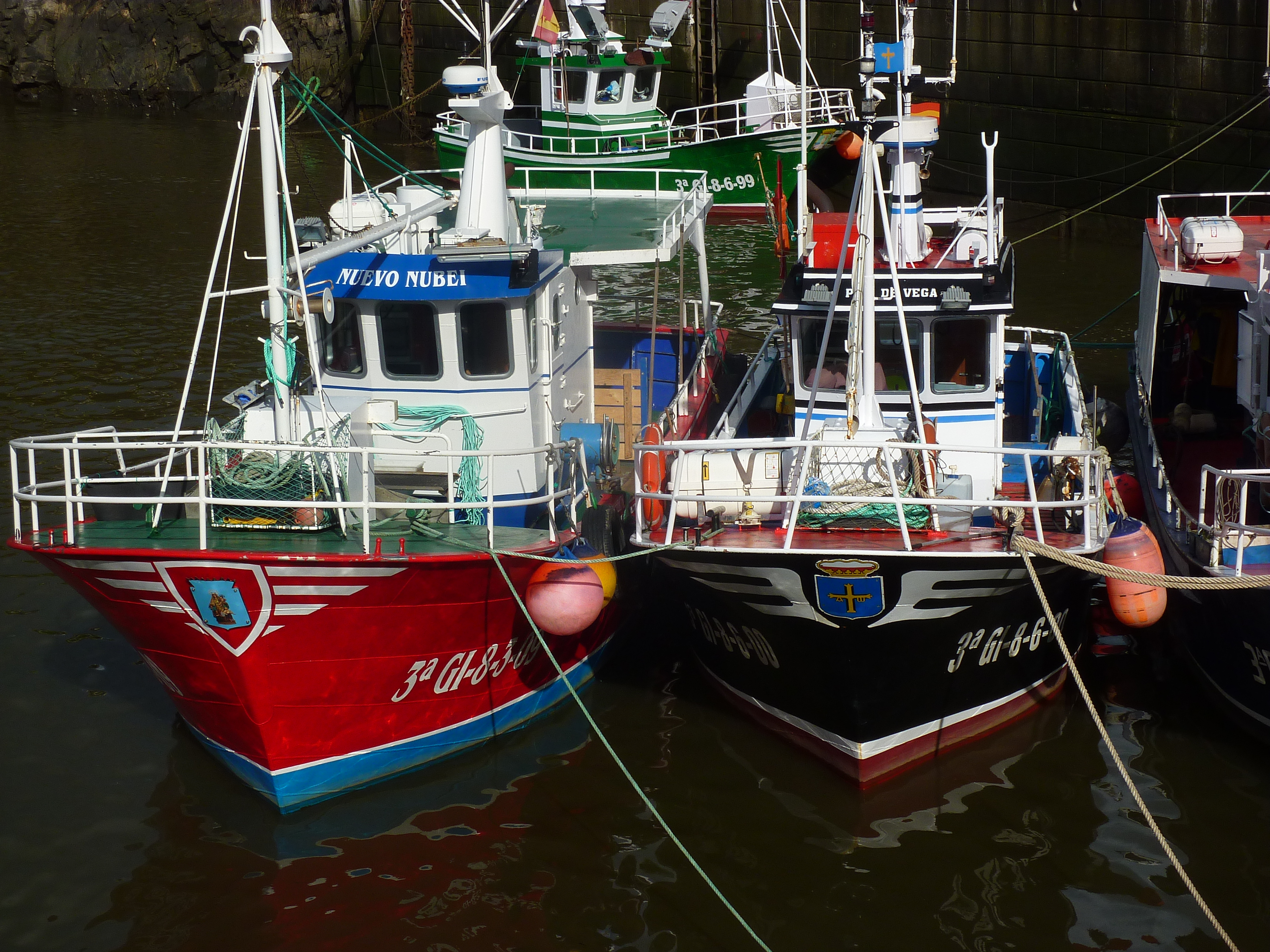
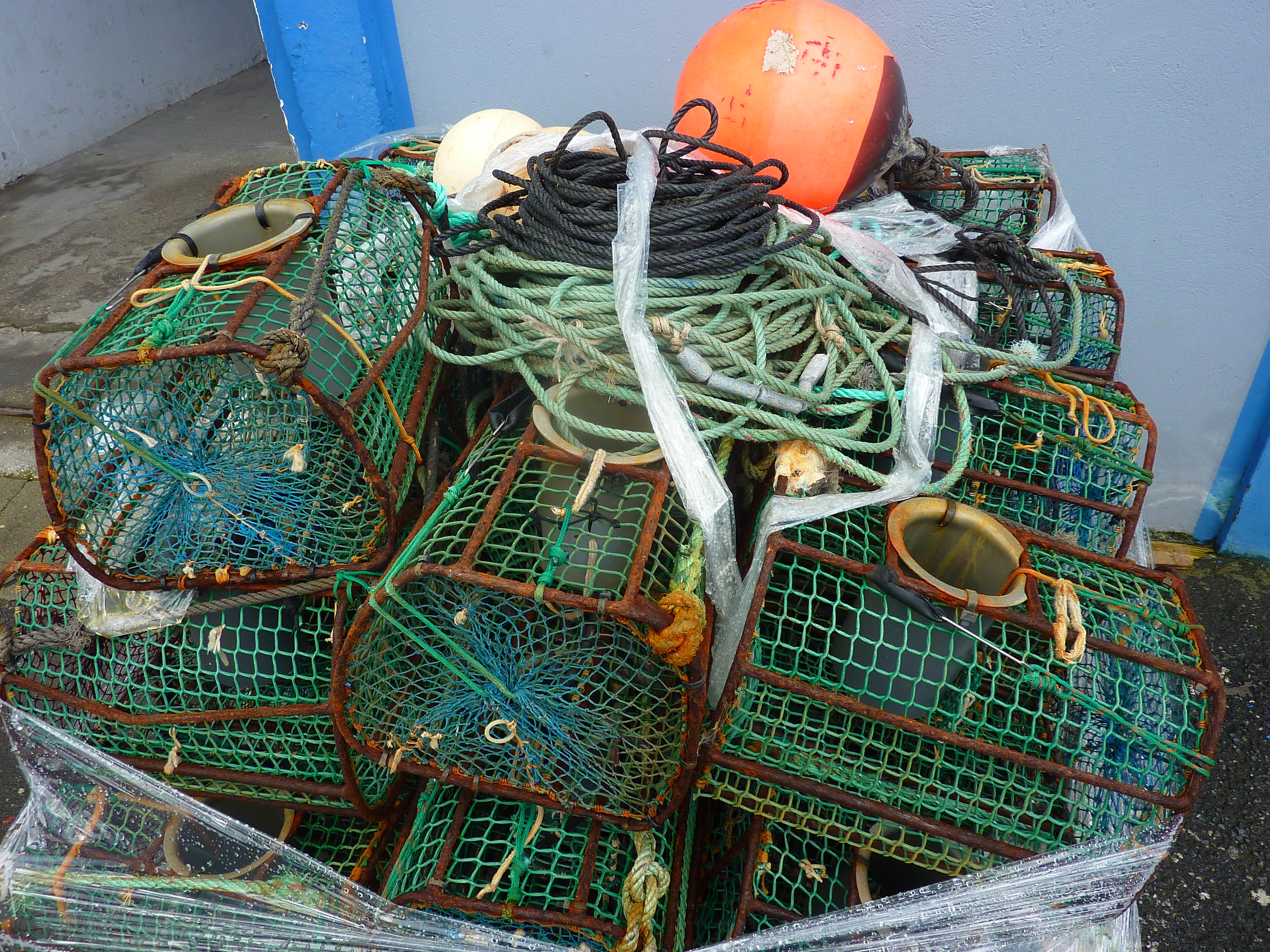

Malvinas
Malvinas/Falkland industrial squid fishery (Argentine shortfin squid, Ilex argentinus and Patagonian squid, Doryteuthis gahi) is one of the most complex and well managed fisheries of the world. The fishery uses a real-time assessment system in order to control fishing effort to allow a sufficient escapement biomass at the spawning season. This squid fishery in Malvinas is mainly done by 17 Spanish factory trawlers, Falkland flagged, with base in the port of Vigo. The Vigo´s fleet catches a yearly average (2013-18) of 3,652 t (€4.1 millions) of Argentine shortfin squid (“pota argentina”) and 4,723 t (€9.3 millions) of Patagonian squid (“calamar patagónico”) which are all brought back to Vigo, processed and distributed worldwide. The economic relevance of this fishery is extraordinary for the port of Vigo, representing 25% of the fishing imports.
